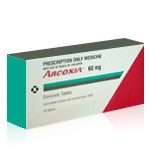Understanding Osteoarthrosis


Osteoarthrosis, often referred to interchangeably with osteoarthritis, is one of the most prevalent joint disorders worldwide, affecting millions of people, especially as they age. It represents a significant burden not only in terms of physical health and mobility but also in quality of life and healthcare resources. Understanding the nature of osteoarthrosis, its distinction from other similar-sounding conditions, available treatments, and the role of medications such as Arcoxia is crucial for managing the disease effectively.
What is the Meaning of Osteoarthrosis?
Osteoarthrosis is a chronic degenerative joint disease characterized by the breakdown of articular cartilage, subchondral bone remodeling, and synovial inflammation. Over time, these changes lead to pain, stiffness, reduced joint function, and sometimes deformity. Unlike some other joint diseases, osteoarthrosis is not primarily an inflammatory condition, although low-grade inflammation may be present in the affected joints.
The disease commonly affects weight-bearing joints such as the knees, hips, and spine, but it can also involve the hands and other joints. The process begins when the cartilage that cushions the ends of bones deteriorates due to mechanical stress, aging, genetic predisposition, metabolic changes, or injury. As the cartilage wears away, bones may rub against each other, causing pain and functional limitations. Bone spurs (osteophytes) can form, and joint space can narrow, contributing further to joint dysfunction.
Osteoarthrosis vs. Arthritis: Understanding the Difference
The terms "arthritis" and "arthrosis" are frequently confused or used interchangeably, but they refer to different aspects of joint diseases. Arthritis is a broader term that denotes inflammation of the joints and encompasses over 100 different types of joint conditions, including rheumatoid arthritis, psoriatic arthritis, and gout. These types are generally characterized by a systemic inflammatory process, and they may involve other organs and tissues beyond the joints.
In contrast, osteoarthrosis (or osteoarthritis) is considered a non-inflammatory degenerative condition. Although mild inflammation may be present in later stages, it is not the primary driver of the disease. The primary pathology of osteoarthrosis is mechanical degeneration — a result of wear and tear over time — rather than immune-mediated inflammation. This distinction is important because it influences treatment strategies and prognosis.
How Do You Fix Osteoarthrosis?
There is currently no cure for osteoarthrosis, but a combination of lifestyle modifications, physical therapy, pharmacological management, and in some cases, surgical interventions can significantly alleviate symptoms and improve joint function. The goal is to slow disease progression, relieve pain, and maintain mobility.
Lifestyle changes are foundational. Weight management is critical for reducing stress on weight-bearing joints, particularly the knees and hips. Regular low-impact physical activity such as swimming, walking, or cycling helps to maintain joint flexibility and strengthen the muscles around the joints, which supports better movement and function.
Physical therapy is often recommended to guide patients through tailored exercises that enhance joint stability and range of motion. Assistive devices such as braces, orthotics, or walking aids may also be employed to reduce strain on affected joints.
Pain management is typically approached through a stepwise strategy. Over-the-counter analgesics such as acetaminophen may be used for mild pain. Nonsteroidal anti-inflammatory drugs (NSAIDs), including both non-selective (e.g., ibuprofen) and COX-2 selective inhibitors (e.g., Arcoxia), are commonly prescribed to manage more severe symptoms. Intra-articular corticosteroid injections may provide temporary relief in certain cases.
For advanced cases of osteoarthrosis where conservative treatments fail to provide sufficient relief, surgical options like joint replacement (arthroplasty), osteotomy (bone realignment), or arthroscopic debridement may be considered. Total knee or hip replacements have been highly successful in restoring function and alleviating pain in severely affected patients.
Prognosis for Osteoarthrosis
The progression of osteoarthrosis is typically slow but varies significantly among individuals. Many people live with mild to moderate symptoms for decades, managing their condition effectively with conservative measures. In others, the disease may progress more rapidly, leading to significant joint damage, pain, and disability.
Factors influencing prognosis include the age of onset, the joints affected, body weight, coexisting medical conditions, level of physical activity, and how early and effectively treatment is initiated. For instance, younger individuals who develop osteoarthrosis due to sports injuries or congenital joint abnormalities may experience a different disease course than older adults with age-related degeneration.
Osteoarthrosis is not life-threatening, but its impact on quality of life can be substantial. Chronic pain, loss of mobility, and decreased independence can contribute to psychological distress, including depression and anxiety. Therefore, a multidisciplinary approach involving physical therapists, primary care physicians, orthopedic specialists, and psychologists may be beneficial for comprehensive care.
The Role of Arcoxia in the Treatment of Osteoarthrosis
Arcoxia, known generically as etoricoxib, is a selective COX-2 inhibitor belonging to the class of NSAIDs. It plays a crucial role in the symptomatic treatment of osteoarthrosis, particularly in patients who require long-term pain management and are at risk of gastrointestinal complications from traditional NSAIDs.
Etoricoxib works by selectively inhibiting the cyclooxygenase-2 (COX-2) enzyme, which is involved in the synthesis of prostaglandins responsible for pain and inflammation. Unlike non-selective NSAIDs, Arcoxia spares the COX-1 enzyme, which helps protect the stomach lining. This selectivity reduces the risk of gastrointestinal side effects such as ulcers or bleeding, making it a safer choice for long-term use in many patients.
Clinical studies have demonstrated that Arcoxia provides effective pain relief and improves joint function in osteoarthrosis patients. Its once-daily dosing is convenient and helps ensure adherence. The usual recommended dose for osteoarthrosis is 30 to 60 mg per day, depending on the severity of symptoms and the patient’s response to therapy.
However, Arcoxia, like all medications, carries potential risks. It may increase the risk of cardiovascular events such as heart attack or stroke, especially at higher doses or in patients with existing cardiovascular disease. Therefore, it is essential to assess the cardiovascular risk profile of the patient before initiating therapy and to use the lowest effective dose for the shortest possible duration.
In addition to its efficacy, Arcoxia has a favorable safety profile concerning renal function and platelet activity compared to some traditional NSAIDs. Nonetheless, periodic monitoring of kidney function, blood pressure, and liver enzymes is advisable during prolonged therapy.
Arcoxia is generally well-tolerated, with common side effects including headache, dizziness, fluid retention, and mild gastrointestinal discomfort. Rare but serious adverse events include liver dysfunction and allergic reactions, necessitating medical supervision during treatment.
Conclusion
Osteoarthrosis is a chronic, degenerative condition that affects millions of individuals worldwide, posing a significant challenge in terms of mobility, independence, and quality of life. Though it is not curable, early diagnosis and a tailored treatment strategy can dramatically improve outcomes.
Understanding the difference between osteoarthrosis and other arthritic conditions helps ensure appropriate treatment. While lifestyle modifications and physical therapy remain central to management, pharmacological options like Arcoxia offer effective symptom relief, especially in moderate to severe cases. Surgical intervention may become necessary in advanced stages.
Ultimately, the prognosis for osteoarthrosis depends on timely intervention, consistent management, and a comprehensive, patient-centered approach that addresses both physical and emotional well-being. Through a combination of medical therapy, education, and supportive care, individuals with osteoarthrosis can maintain a high quality of life and functional independence well into older age.
Article Post: Editorial Team of RXShop.md
(Updated at Jun 30 / 2025)

